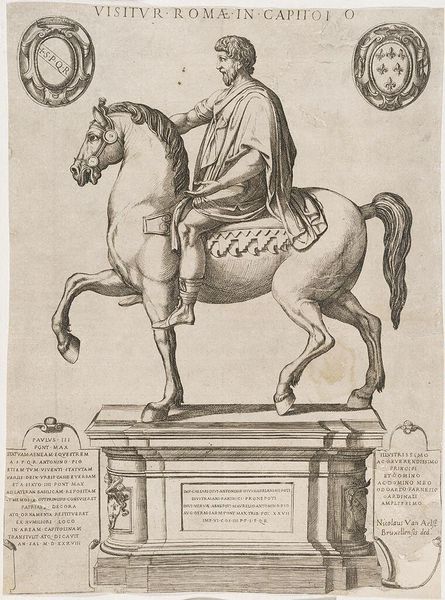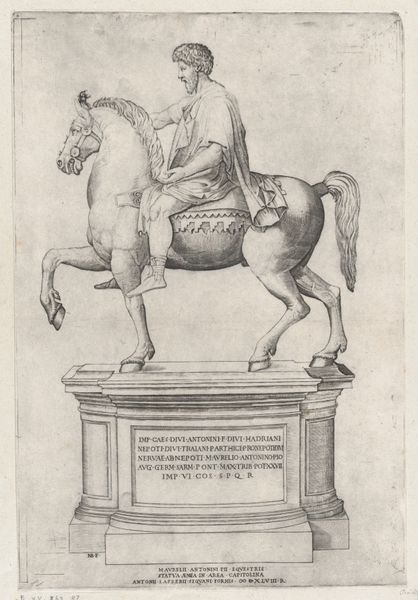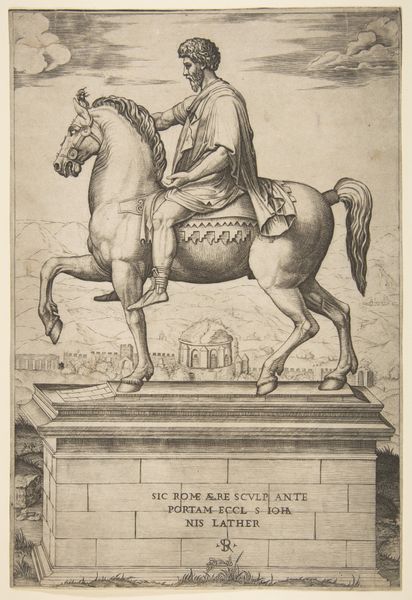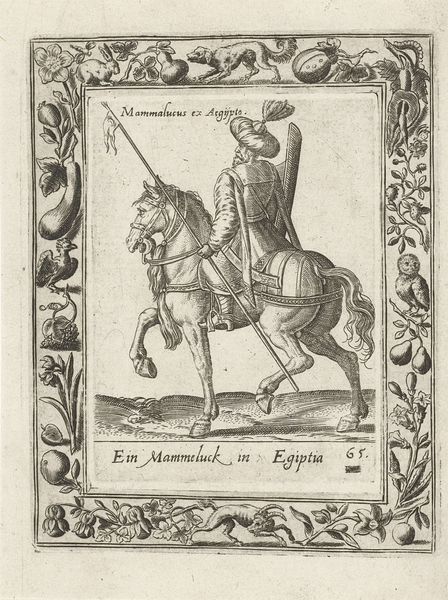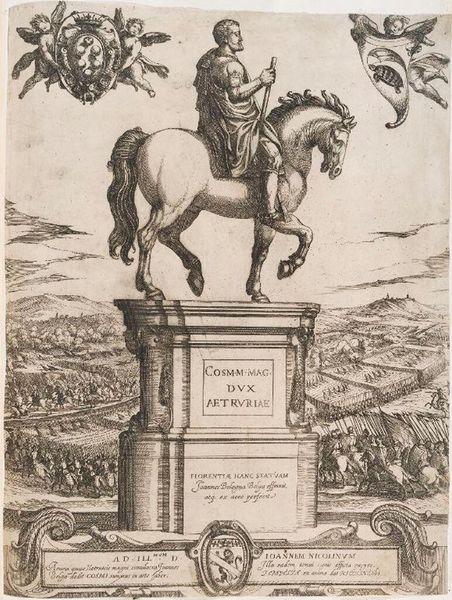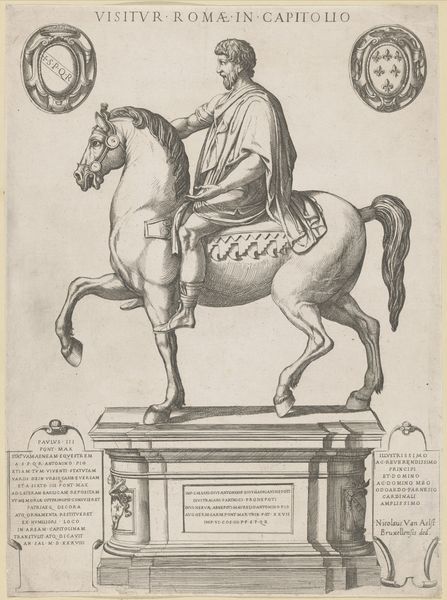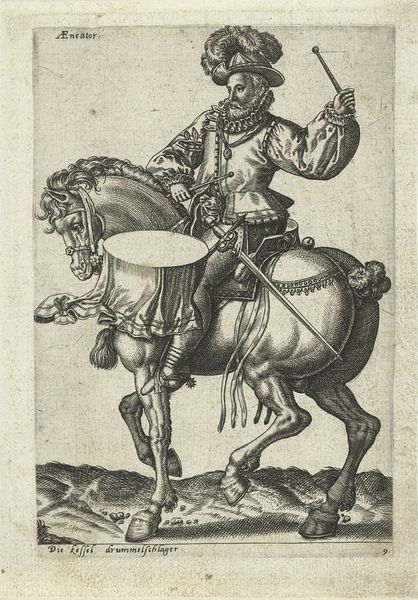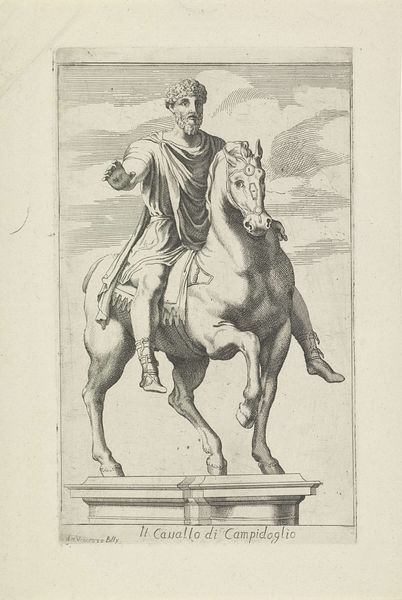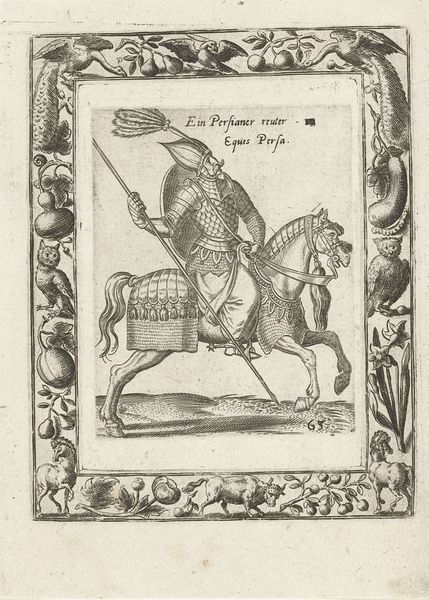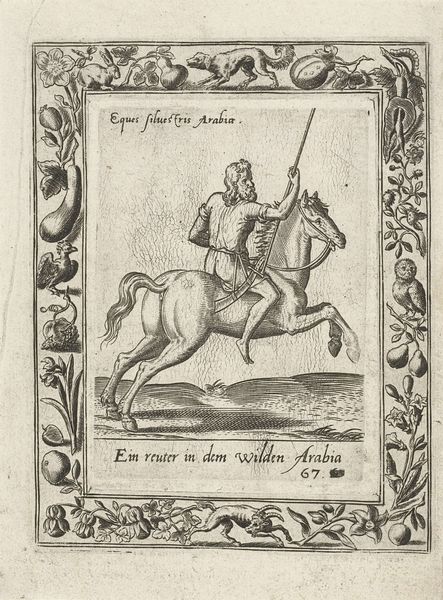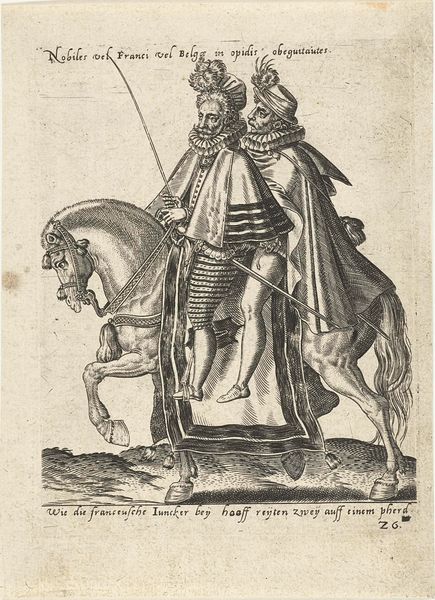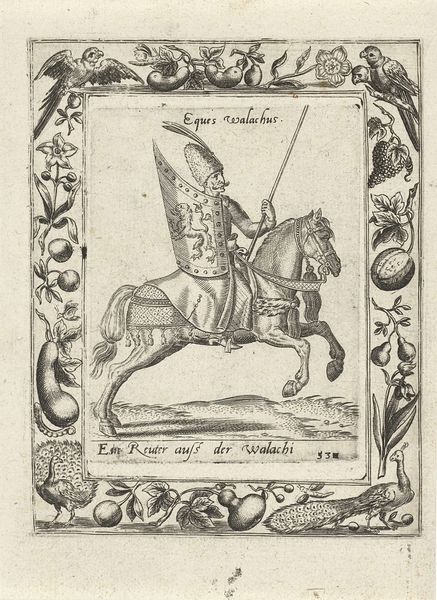
print, engraving
#
portrait
#
baroque
# print
#
old engraving style
#
figuration
#
19th century
#
history-painting
#
engraving
Dimensions: height 315 mm, width 217 mm
Copyright: Rijks Museum: Open Domain
Editor: This is Richard Collin's "Ruiterstandbeeld van Marcus Aurelius," or Equestrian statue of Marcus Aurelius from 1677. It’s an engraving, giving it this very linear, almost architectural feel. I'm struck by how static it feels despite the horse being raised. What do you see in this piece? Curator: Beyond the portrait aspect, I see the enduring power of symbols. The equestrian statue itself – a ruler on horseback – it evokes authority, control. Richard Collin’s print is itself layered, reproducing the ancient sculpture, ensuring its continued symbolic relevance through centuries. Do you notice any repeating patterns? Editor: Now that you mention it, there’s a tension between dynamism and restraint everywhere, even in the horse's posture, which almost mirrors Aurelius’ own posture! But what does that restraint signify? Curator: Perhaps Collin is subtly suggesting that true power lies not in brute force, but in a kind of intellectual, philosophical mastery - precisely the qualities Aurelius embodied, aligning himself to philosophical virtues rather than military might. Notice too how the setting focuses our vision on the figure alone, with the symbolic pedestal. That alone, what does it suggest to you? Editor: Hmmm. Almost as if the pedestal isolates him. This isn't just a powerful man but an ideal, preserved. I never considered how much symbolic weight a seemingly simple image could carry! Curator: Exactly! Each element, even the artistic style of engraving, contributes to the continued life and interpretation of Marcus Aurelius. Editor: It’s fascinating how the choice of engraving, which initially felt simply like the medium, reinforces the image's themes! It all ties back to how visual language adapts, preserving memories across time. Thanks for enlightening me!
Comments
No comments
Be the first to comment and join the conversation on the ultimate creative platform.
